A walk through the University area of Manchester
This 3km walk starts at Manchester Piccadilly rail station and takes you down Whitworth Street. As you turn into Oxford Road take a short diversion through the historic area of Little Ireland to see a statue of John Dalton. Back on Oxford Road walk through Manchester Metropolitan University and the University of Manchester and finish at the Whitworth Art Gallery.
Walk out of the main exit from Piccadilly mainline rail station (A) you will see a pedestrian bridge on your left a short distance down Station Approach.
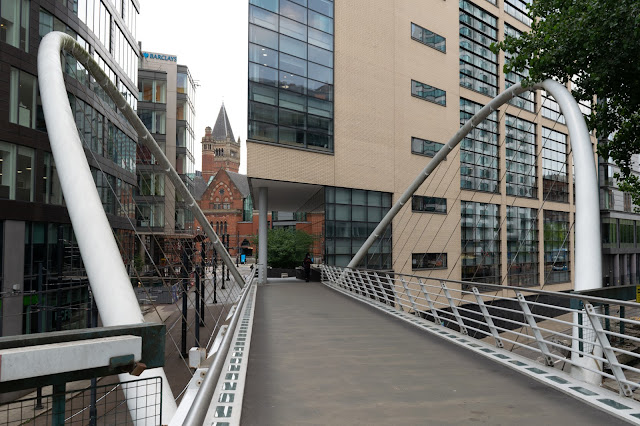 |
| Pedestrian bridge with Crown Court in distance |
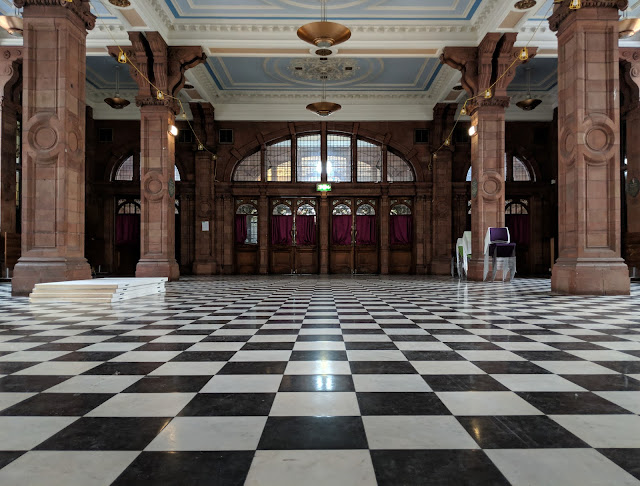 |
| Sackville Street Building |
Walk along Whitworth Street till you reach Oxford Road (D). On the opposite side of the road is the Arts Culture and Media Hub of Manchester Metropolitan University. Cross over to the other side of Oxford Road here and turn left. Walk past the Grand Central pub and then turn right down a cobbled street (E). You'll see the Salisbury Ale House in front of you.
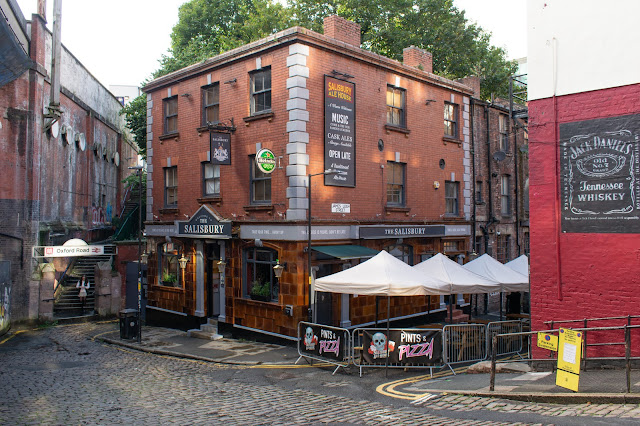 |
| Salisbury Ale House |
This pub was located next to several streets of back to back terraces that were part of Little Ireland but are no longer standing. Turn left under the railway arch then right onto a short road that follows the railway viaduct. At the end of this road turn left.
As you walk down Great Marlborough Street, what remains of Little Ireland is on the right hand side marked by a plaque. At the end of this street you will see a statue of John Dalton (F). He was the founder of the atomic theory. Turn left by the statue then turn right back into Oxford Road.
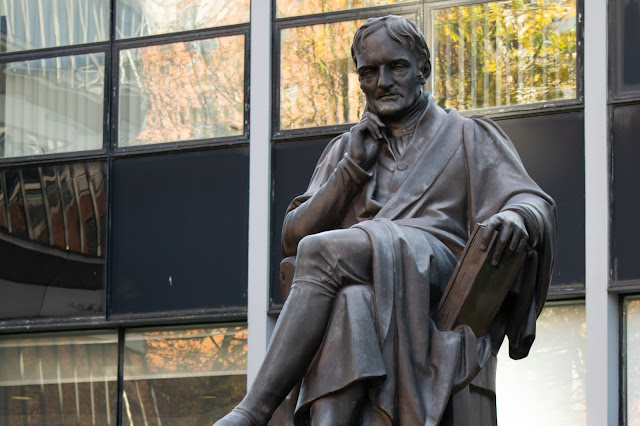 |
| John Dalton |
As you walk down Oxford Road you will see the Mancunain Way flyover above you and underneath the flyover on the left is Hatch (G). This is an interesting collection of independent street food stalls. https://hatchmcr.com
 |
| Hanoi 75 at Hatch |
As you walk further down Oxford Road you pass through Manchester Metropolitan University campus and then the University of Manchester campus.
A short diversion on your left down Booth Street (H) takes you to the National Graphene Institute and the new campus for Manchester Engineering Campus Development
 |
| National Graphene Institute |
Carry on down Oxford Road and turn right after the long terrace of Waterloo Place, and down a pedestrian walkway (I) (Bridgeford Street). On the left hand side is Coupland Building 1, the site where Baby, The Small Experimental Machine and first computer to run an electronic stored program, ran in 1948. There's a working replica at the Science and Industry Museum
Alan Turing moved to Manchester that year and also worked in Coupland Building 1. He devised the "imitation game" here and developed algorithms to generate patterns seen in nature.
 |
| Coupland Building 1 |
The Rutherford Building is at the side of Coupland Building 1 but it's best seen from Coupland Street which is a short distance down Oxford Road through a stone arch. There is a wall plaque here to mark the entrance. Ernest Rutherford carried out the first experimental nuclear reaction here and changed Nitrogen into Oxygen and Hydrogen.
As you walk on down Oxford Road you pass Manchester Museum which is closed for refurbishment until late 2022. You then walk in front of the Whitworth Building (see top photo). Take a diversion through the arch into the quadrangle.
As you walk on you will reach Whitworth Park on the right with the university owned Whitworth Art Gallery (J) on the corner. To finish the walk either take a bus back into the centre on one of the busiest bus routes in Europe or walk back through the university campuses.
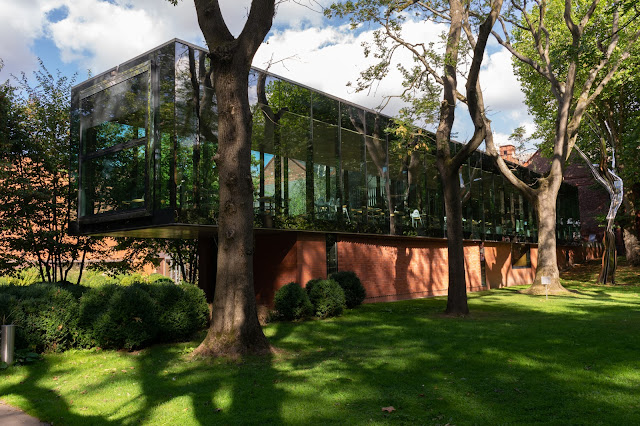 |
| Whitworth Art Gallery Cafe |
Staff and students of the University of Manchester have been awarded 25 Nobel Prizes and these have been awarded every single decade since the beginning of the last century with the latest awards for the discovery of graphene.

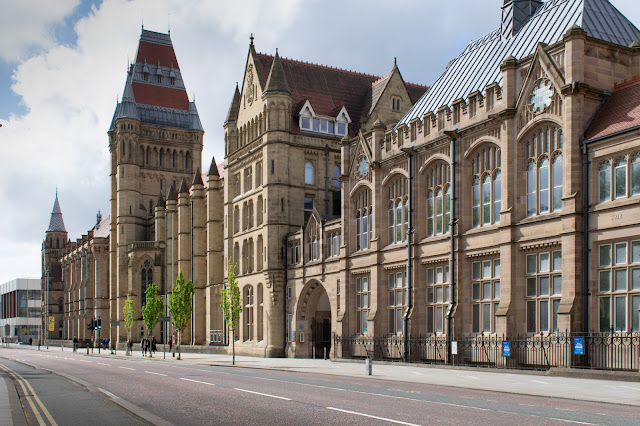
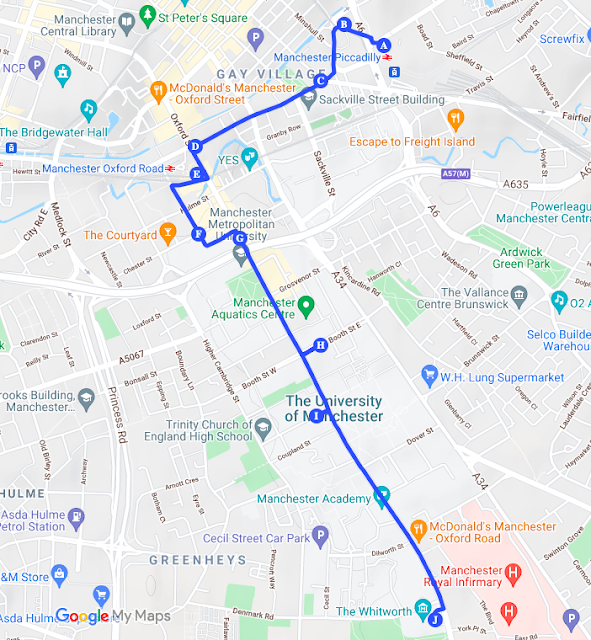


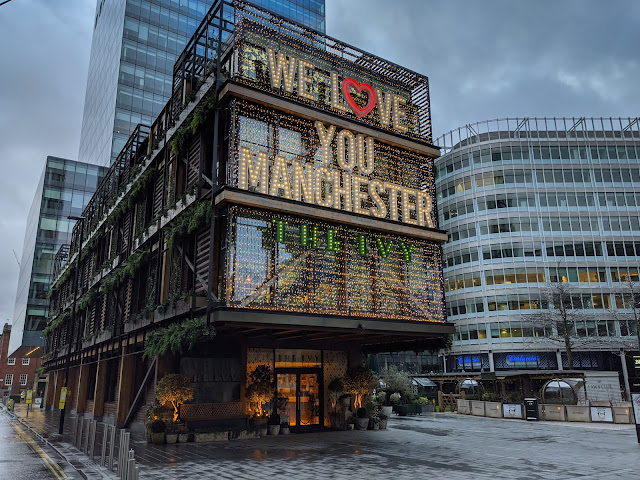
wow!
ReplyDeleteYour blog post about Manchester was really interesting. I particularly loved that you included pictures of the buildings and some of the sites you visited. I also liked that you included some of the history of the city. I ended up finding some new places to visit in Manchester after reading your post. Extension Builders South Manchester
ReplyDelete